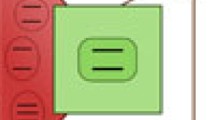Abstract
It is shown how information contained in the pairwise correlations (in general, partial) between atoms of a gas can be used to completely convert heat taken from a thermostat into mechanical work in a process of relaxation of the system to its thermal equilibrium state. Both classical correlations and quantum correlations (entanglement) are considered. The amount of heat converted into work is proportional to the entropy defect of the initial state of the system. For fully correlated particles, in the case of entanglement the amount of work obtained per particle is twice as large as in the case of classical correlations. However, in the case of entanglement, the amount of work does not depend on the degree of correlation, in contrast to the case of classical correlations. The results explicitly demonstrate the equivalence relation between information and work for the case of two-particle correlations.
Similar content being viewed by others
References
Szilard, L.: Über die Entropieverminderung in einem thermodynamischen System bei eingriffen intelligenter Wesen (On the decrease of entropy in a thermodynamic system by the intervention of intelligent beings). Z. Phys. 53, 840–856 (1929)
Landauer, R.: Irreversibility and heat generation in the computing process. IBM J. Res. Dev. 5, 183–191 (1961)
Bennett, C.H.: The thermodynamics of computation—a review. Int. J. Theor. Phys. 21, 905–940 (1982)
Levitin, L.B.: Quantum amount of information and maximum work. In: Cabile, D., Kuper, D.G., Riess, I. (eds.) Proc. 13th IUPAP Conf. Stat. Phys. Hilger, Bristol (1978)
Levitin, L.B.: Information theory for quantum systems. In: Diner, S., Lochak, G. (eds.) Information, Complexity, and Control in Quantum Physics, pp. 15–47. Springer, Berlin (1987)
Levitin, L.B.: Gibbs’ paradox and equivalence relation between quantum information and work. In: Proc. Worksh. on Physics and Computation (PhysComp’92), pp. 223–226. IEEE Comput. Soc., Los Alamitos (1993).
Levitin, L.B.: On the quantum measure of the amount of information. In: Proc. 4th National Conf. on Information Theory, Tashkent, USSR, 1969, pp. 111–116 (1969). English translation: Ann. Fond. de Broglie 21 (1996), 345–348.
Bennett, C.H., Shor, P.: Quantum information theory. IEEE Trans. Inf. Theory 44, 2724–2742 (1998)
Peres, A.: Quantum Theory, Concepts and Methods. Kluwer Academic, Dordrecht (1993)
Alicki, R., Horodecki, M., Horodecki, P., Horodecki, R.: Thermodynamics of quantum informational systems—Hamiltonian description. Open Syst. Inf. Dyn. 11, 205–217 (2004)
Dahlsten, O., Renner, R., Rieper, E., Vedral, V.: The work value of information (2009). arXiv:0908.0424 [quant-ph]
Feldmann, T., Kosloff, R.: Quantum four-stroke engine: thermodynamic observables in a model with intrinsic friction. Phys. Rev. E 68, 016101 (2003)
Horodecki, M., Oppenheim, J., Horodecki, R.: Are the laws of entanglement theory thermodynamical? Phys. Rev. Lett. 89, 240403 (2002)
Lloyd, S.: Quantum-mechanical Maxwell’s demon. Phys. Rev. A 56, 3374–3382 (1997)
Oppenheim, J., Horodecki, M., Horodecki, P., Horodecki, R.: A thermodynamic approach to quantifying quantum correlations. Phys. Rev. Lett. 89, 180402 (2002)
Scully, M.: Extracting work from a single thermal bath via quantum negentropy. Phys. Rev. Lett. 87, 220601 (2001)
Zureck, W.: Quantum discord and Maxwell’s demons. Phys. Rev. A 67, 012320 (2003)
Schumacher, B.: Quantum coding. Phys. Rev. A 51, 2738–2747 (1995)
Zureck, W.: Quantum discord and Maxwell’s demons (2002). arXiv:quant-ph/0202123
Author information
Authors and Affiliations
Corresponding author
Rights and permissions
About this article
Cite this article
Levitin, L.B., Toffoli, T. Heat-to-Work Conversion by Exploiting Full or Partial Correlations of Quantum Particles. Int J Theor Phys 50, 3844–3851 (2011). https://doi.org/10.1007/s10773-011-0886-8
Received:
Accepted:
Published:
Issue Date:
DOI: https://doi.org/10.1007/s10773-011-0886-8




